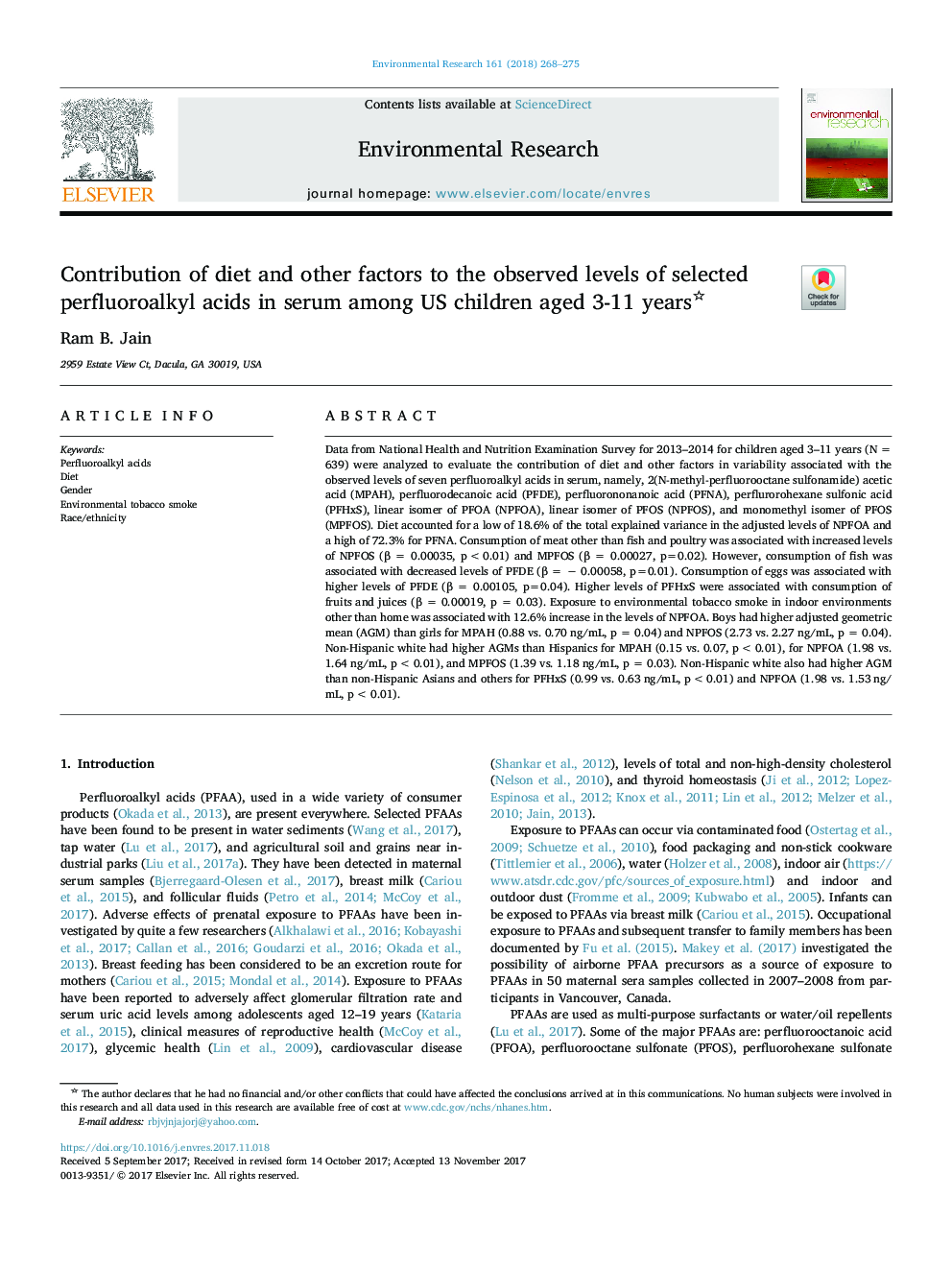| Article ID | Journal | Published Year | Pages | File Type |
|---|---|---|---|---|
| 8869259 | Environmental Research | 2018 | 8 Pages |
Abstract
Data from National Health and Nutrition Examination Survey for 2013-2014 for children aged 3-11 years (N = 639) were analyzed to evaluate the contribution of diet and other factors in variability associated with the observed levels of seven perfluoroalkyl acids in serum, namely, 2(N-methyl-perfluorooctane sulfonamide) acetic acid (MPAH), perfluorodecanoic acid (PFDE), perfluorononanoic acid (PFNA), perflurorohexane sulfonic acid (PFHxS), linear isomer of PFOA (NPFOA), linear isomer of PFOS (NPFOS), and monomethyl isomer of PFOS (MPFOS). Diet accounted for a low of 18.6% of the total explained variance in the adjusted levels of NPFOA and a high of 72.3% for PFNA. Consumption of meat other than fish and poultry was associated with increased levels of NPFOS (β = 0.00035, p < 0.01) and MPFOS (β = 0.00027, p=0.02). However, consumption of fish was associated with decreased levels of PFDE (β = â 0.00058, p=0.01). Consumption of eggs was associated with higher levels of PFDE (β = 0.00105, p=0.04). Higher levels of PFHxS were associated with consumption of fruits and juices (β = 0.00019, p = 0.03). Exposure to environmental tobacco smoke in indoor environments other than home was associated with 12.6% increase in the levels of NPFOA. Boys had higher adjusted geometric mean (AGM) than girls for MPAH (0.88 vs. 0.70 ng/mL, p = 0.04) and NPFOS (2.73 vs. 2.27 ng/mL, p = 0.04). Non-Hispanic white had higher AGMs than Hispanics for MPAH (0.15 vs. 0.07, p < 0.01), for NPFOA (1.98 vs. 1.64 ng/mL, p < 0.01), and MPFOS (1.39 vs. 1.18 ng/mL, p = 0.03). Non-Hispanic white also had higher AGM than non-Hispanic Asians and others for PFHxS (0.99 vs. 0.63 ng/mL, p < 0.01) and NPFOA (1.98 vs. 1.53 ng/mL, p < 0.01).
Related Topics
Life Sciences
Environmental Science
Health, Toxicology and Mutagenesis
Authors
Ram B. Jain,
